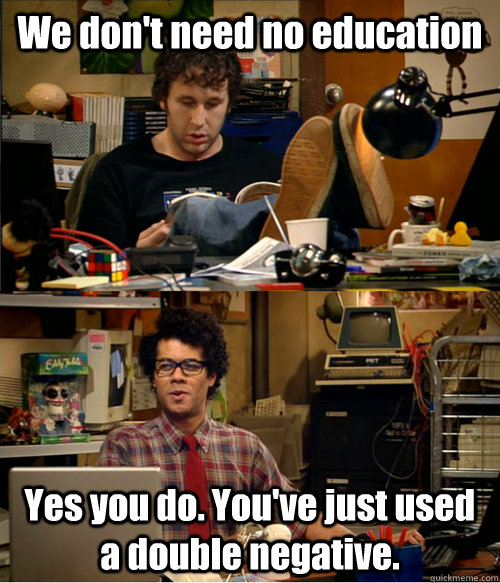Writing for social media: 10 copywriting hacks that drive clicks

Did you write highly convertible landing pages, blog posts that bring tons of traffic, and straight-outta-house-of-cards political articles before becoming a social media manager?
Then this post is not for you. Go away and check out anything else on this blog.
Did you one day find yourself writing posts for Facebook and Twitter, promoting products, services, and events? Are you not really sure how to make people click links or at least pay attention to your product announcements?

Then this post is for you.
Writing for social media isn’t that much different from any other forms of copywriting. But it’s more demanding - the posts are shorter, the competition for the reader’s attention is higher. You need to know the best (but simplest!) rules of copywriting to make it work.
Let’s get to it.
P.S. Note that I won’t talk here about pictures, videos, and design - all of these things are no less important, hope you know that. But this post is about writing.
Rule #1: Focus on the reader
How do you announce your news? Is it something like:
We’ve made the new X. It’s so much better than any other Xs. It has this feature and this feature, it’s beautifully designed and will help you do life so much easier.
If so, change that. You should be always talking about your customer, a tiny bit about your product, and hardly ever about your company. Your sentences should start with “you”. Instead of the list of features, write a list of benefits that your customer will get once they get your product.
Have you had struggles with xyz? The new feature X will help you do life so much easier in this way, this way, and this way. Check it out and see for yourself.
Remember, no one cares about your company (except for you, of course, shhhh). People care about their own problems and possible solutions to these problems. That means you have to state the problem and present the solution in a way that’s related to your product. Only then will they feel motivated to buy.
Rule #2: Tell a story
Aim to tell a story in every post. Whether it’s an important announcement or an everyday sort of hey-followers-don’t-forget-about-me post. It’s hard when you only get a couple of lines and when your topic is a menu or a new clothes collection. But it’s possible.

Don’t write:
Hey guys, we’ve reached a thousand customers! Well done us.
Tell in short how you got there. Or even do a whole post, like this one from Link-Assistant.Com.
So what’s the reason for going through this creative writing trouble?
Thing is, people remember stories better than any other forms of writing. We’re exposed to stories since childhood; we’re innately interested in them. How many times have you finished watching a movie or even a YouTube video “to see how it ends”? How much gossip have you listened to even though you weren’t genuinely interested in the people involved?
People care about any kind of stories - give them what they’ll care about.
Rule #3: Use analogies
Your goal as a social media writer is to drive action. Whether it’s clicking on a post below, or keeping followers on your page, or buying a product - maybe not right now, but at some time in the future. To drive action, your writing should be persuasive and compelling. For it to have these qualities, readers should understand your writing well, never get the urge to argue with it, and be able to relate to it. Metaphors, similes, and analogies make it easier to achieve those things.
However:
- Don’t use analogies for the sake of using them. Just in cases when they make your point clearer and more believable.
- Don’t use cliche analogies. Cliches don’t get anyone hooked.
- Don’t use analogies that your audience won’t get, that are uncomfortable or offensive.
The best sort of analogy includes the obvious, uncontroversial statements, which is compared to your more controversial statement. This communicates your idea in the most persuasive way. For example, blockchain is often explained as being the same as our DNA. Consequently, hacking it would be as impossible as changing a sequence of a genetic code. The analogy makes it far more persuasive than if we would be simply told: “It’s impossible to hack information that uses blockchain technology”. Although you weren’t given any real explanation or proof.
And while we’re on the subject of proof.
Rule #4: Use justification
People value proof. But that’s not the fun part. The fun part is, people value the illusion of proof. Let me explain.
There was the Xerox line study made by researchers from Harvard University and City University of New York in 1978.
In the experiment, people asked to jump the line to use the Xerox machine those who were in the line. Participants were grouped to ask in three different ways:
1. “Excuse me, I have five pages. May I use the Xerox machine, because I’m in a rush?”
2. “Excuse me, I have five pages. May I use the Xerox machine?”
3. “Excuse me, I have five pages. May I use the Xerox machine, because I have to make copies?”
People who were in the line, unaware of the experiment, were watched.
In group #1, 94% of people agreed to allow them to jump the line.
In group #2, 60% agreed.
In group #3, however, 93% allowed a person to pass, although their justification was not valid at all! But participants provided a justification, and human brain that loves making shortcuts in the decision-making process accepted that as a valid reason.
What does this tell us in terms of copywriting? “Because” is a powerful word. If you want people to act (click, subscribe, read the post, buy the product), justify your ask. And the good news is, it doesn’t have to be a valid justification.
E.g., Subscribe to our page, because it will make you happy/you’ll enjoy it/it’s Monday/etc.
Which brings us to the next point.
Rule #5: Include call-to-action

It’s not a cool thing to do, I know. It feels dumb asking for a retweet or telling people to “click here” when they clearly see where to click. However, numerous studies have shown that this increases conversion, subscription rate, clicking rate and what not. Ask people religiously what you want them to do in social media posts, and you’ll see the effect. Some examples include:
- Click here
- Read the post
- Subscribe to our channel
- Like & Share/Retweet (RT)
- Try it!
- Follow our page
- Buy now
You get the point.
Rule #6: Write the way people talk
If you want people to read your posts, write simply. Use short sentences, avoid long-winded phrases, include emojis to convey the tone. Don’t be a grammar nazi, this isn’t the sort of place where it’s useful. Start sentences with “but” and “because” if it feels right.

Legendary copywriter Joe Sugarman talked about copywriting as a “slippery slope”:
The job of the first line is to get them sucked into the second line.
The job of the second line is to get them sucked into the third line.
The job of the third line is to get them sucked into the fourth line.
Writing simply, in short sentences, mimicking the way people talk makes that easier.
Rule #7: Make your text easy to scan
Social media posts don’t always mean writing a tweet of 240 characters. Sometimes, it’s proper lengthy posts that have to convey a lot.
If you’re writing one of these, use bullet points, make lists (put your 2 most important messages at the top and 3rd most important message at the bottom), use different fonts, short paragraphs, emojis, horizontal lines - anything that keeps your text visibly diverse and easy to scan. Remember, as good as your writing is, some people will still scan your text. They’re just that busy.
Rule #8: Be explicit
Whether you’re writing about an offer, a social media contest, a job vacancy - be explicit. Remember the rule “explain to me as if I’m five” and use it all the way. Ambiguous offers, too many details, anything even a little bit confusing will drive your audience away. Don’t assume customers know how something works because they’ve done it before/everyone does that/it’s on your homepage/they’ll guess.
Don’t imply anything - write clearly.
Rule #9: Have your own tone

You probably have your own style of writing, which is in line with your company’s voice. Otherwise, you probably wouldn’t get this job.
Well, stick to it. If you see someone’s tone that seems cooler and more unique, don’t copy it blindly. Steal some ideas, sure, but don’t copy the whole tone. You won’t be able to stick to it for long, it will feel inauthentic to your readers, and you won’t have fun. Similarly, don’t change it because some customers don’t like it. As long as most do and you’re not being offensive, it’s okay. You can’t please everyone and you don’t have to.
Rule #10: Do split tests
You probably saw this one coming. Testing is necessary in every step of a marketing strategy, including copywriting. And good news is, copy tests are easy to do. So, hey, do them. Don’t assume customers behave in a way you would, click posts you’d click, and dislike things you dislike.
It’s natural for people to assume everyone is like them. Don’t fall into the trap - test, read research, and test again.
That’s it for now. Hope you’ve learned a lot, or at least read till the end of the post, because that’s every copywriter’s goal in life. One last piece of valuable advice: come back to this post every once in a while. Social Media Management includes a lot of diverse tasks, and it’s easy to forget how the main task - writing - should be done.
If you have any thoughts or questions, please leave them in the comment section below. I’ll be happy to talk more about copywriting! As much as you need.













